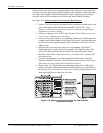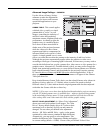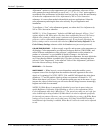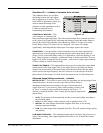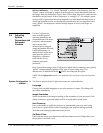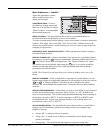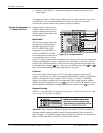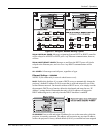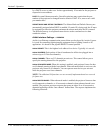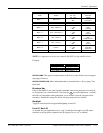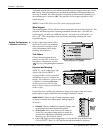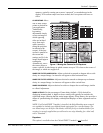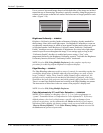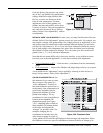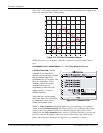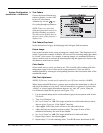
Section 3: Operation
3-38 Christie DS+60/DW30/Matrix 3000 User’s Manual 013-100149-02 Rev. 1 (01/07)
by a DHCP server or other user. It takes approximately 10 seconds for the projector to
respond at its new address.
PORT: On some Ethernet networks, firewall restrictions may require that the port
number of the projector be changed from its default of 3002. If so, enter a new valid
port number here.
SUBNET MASK AND DEFAULT GATEWAY: The Subnet Mask and Default Gateway are
automatically assigned when DHCP is enabled. If a static IP is being used, the IP must
be assigned first since the projector estimates the subnet mask after the IP is entered.
The Default Gateway is an optional router device used to send and receive data
outside the subnet.
ArtNet Interface Settings
— SUBMENU
ArtNet is an Ethernet communication protocol that was developed by Artistic License.
It is used for controlling lighting/staging equipment from a lighting console or PC
application. It is based on the popular DMX512 control protocol.
ArtNet SUBNET: This is the highest level address for a device. Typically it is set to 0.
ArtNet UNIVERSE: Each packet of data is broadcasted to all devices plugged into a
universe (up to 512 devices/channels).
ArtNet CHANNEL: There are 512 channels per universe. This control allows you to
specify the starting channel for this projector.
ArtNet ADVANCED MODE: When this setting is enabled, each projector listens for data
on 64 channels starting with the base channel. When advanced mode is not in use, the
projector only listens on 10 channels. You can squeeze more devices per universe
when the projector uses fewer channels.
NOTE: The additional 54 functions are not currently implemented and are reserved
for future use.
ArtNet BASE CHANNEL: When advanced mode is enabled, the projector listens to data
on 64 consecutive channels, or 10 consecutive channels when advanced mode is not
enabled. The projector processes requests that come on either 10 or 64 consecutive
channels beginning with the ‘base channel’ defined here. The requests implement the
following functions:



